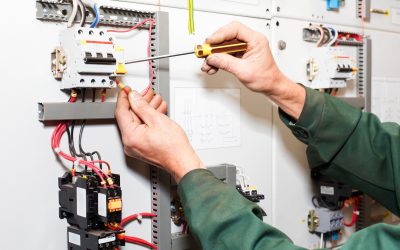So many industries today have a specific need for temp control. For example, maintaining just the right environment for metal hardening is absolutely essential. Processes like extrusion require constant temperatures over specified amounts of time. For many years, heat control was taken care of with standard analog methods, but most companies are seeing the advantages of digital instruments like the Eurotherm temperature controller. So what it the main difference between the two technologies? Let’s check them out and see.
Analog methods
Analog temp control has been around for some time. In many cases, it is as simple as an on and off connection in response to a heat sensitive metal (spring). For example, a thermostat switch for an air conditioner is normally open. The contacts are not touching until heat affects a spring connected to one of the contacts. As the spring expands it eventually touches the other contact, completing the circuit and turning on the air conditioner. After a while, cooler temperatures make the spring contract and this pulls apart the connections, opening the circuit and shutting off the system. This is a simple yet effective way to control temperature.
Digital Methods
Analog methods can be effective but they are not extremely accurate or sensitive. In many of today’s modern heating or cooling systems, a more exact method of heat control is essential. For example, analog control is not sensitive enough to note small fluctuations in atmospheric temperature inside an oven (which is heat treating metal). This is why units like the Eurotherm temperature controller are most often used.
Some of the first digital thermostats utilized thermistors. In electronic circuitry, resistors are used to slow down the flow of current in a circuit. A thermistor is thermal reactive resistor. In other words, its resistance will change according to the temperature of the environment. In order to interpret these minute changes in temp, a microcontroller is used. The microcontroller measures resistance and then turns it into numeric data which can be read and used by a computer.
Modern digital control units utilize proportional and PID control. Proportional puts an end to on and off cycling and is very efficient. Instead of “on/off” proportional control gradually increases or decreases power.
PID control (proportional, integral, derivative) works like proportional control but it has an auto reset function. It constantly measures error values between a measured process and a set point. This automates the process of temperature control very efficiently and works under all kinds of conditions.
This is an oversimplification of how sophisticated high tech equipment like the Eurotherm temperature controller works, but it gives you a general idea. Your industrial controls distributor can show you much more and help you choose the best units for your operation.
